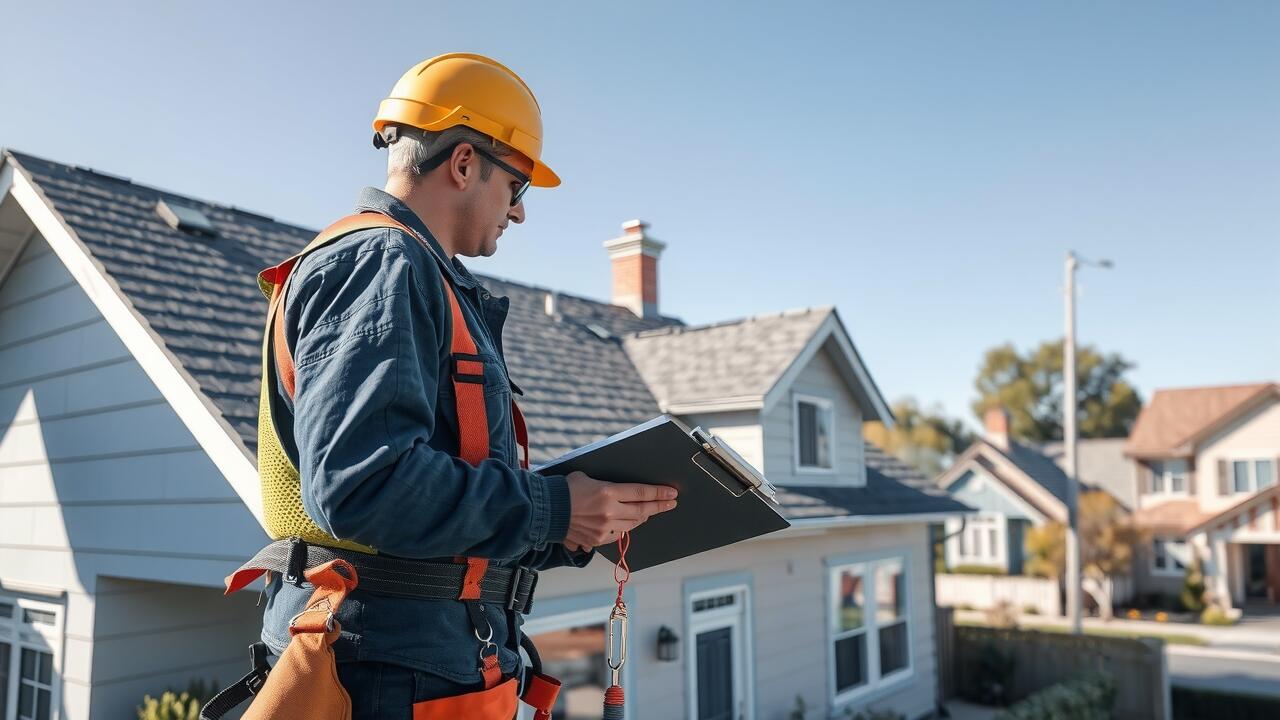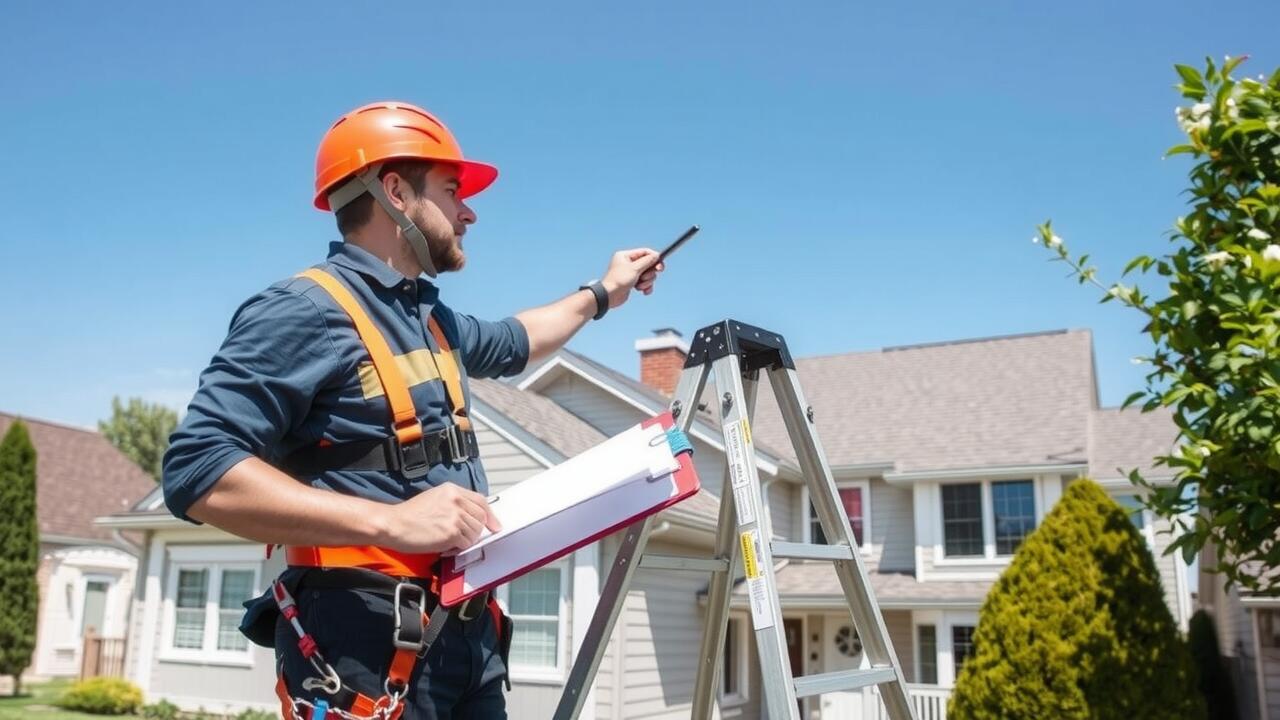
Table Of Contents
Ventilation Issues
Ventilation issues can significantly impact the longevity and performance of a roof. Inadequate airflow can lead to overheating in the attic space during the warmer months. This trapped heat may cause roofing materials to deteriorate faster than expected, resulting in costly repairs. Furthermore, poor ventilation can create moisture problems, leading to condensation that encourages mold growth and promotes wood rot.
During a roof inspection in Black Hawk, South Dakota, identifying signs of poor ventilation is crucial. Inspectors often look for soft spots in the decking, stained insulation, or excessive humidity levels. If these issues are present, homeowners may need to consider installing additional vents or inspecting their existing ventilation systems. Addressing these concerns early can prevent more severe damage and extend the life of the roofing system.
Understanding How Poor Ventilation Affects Roofing
Poor ventilation within a roofing system can lead to significant problems, often becoming evident during a roof inspection in Black Hawk, South Dakota. Insufficient airflow allows heat and moisture to accumulate in the attic space. This can result in accelerated wear on roofing materials, causing premature aging and potential leaks. Furthermore, trapped humidity can create an environment conducive to mold growth, which poses health risks and further damages the roof's integrity.
Additionally, the absence of proper ventilation may cause temperature imbalances in the attic, leading to issues like ice dams in colder months. Ice dams can prevent melting snow from draining properly, increasing the likelihood of water pooling on the roof and eventually infiltrating the structure. Regular assessments during roof inspection in Black Hawk, South Dakota, can identify ventilation shortcomings and help homeowners address these issues before they escalate.
Structural Damage Indicators
Structural damage can manifest in several ways, often revealing critical issues that require immediate attention. Common indicators include sagging or uneven rooflines, which may suggest compromised framing beneath the surface. Inspectors look for cracks in load-bearing walls and signs of moisture intrusion that can weaken the overall structure. A thorough roof inspection in Black Hawk, South Dakota, can help identify these red flags early on, preventing more severe damage from developing.
Another significant sign to consider is the presence of water stains or mold on ceilings and walls. These marks indicate prolonged exposure to moisture, potentially stemming from roof leaks or inadequate insulation. Deteriorated flashing and gaps around vents or chimneys can also serve as warning signs. Regular assessments by qualified professionals can help pinpoint these structural issues, ensuring that homeowners maintain a safe and secure living environment.
Signs of Underlying Structural Integrity Issues
Structural integrity is crucial for the longevity of any roofing system. During a roof inspection in Black Hawk, South Dakota, several indicators can reveal potential underlying issues. Sagging areas, visible cracks, or gaps in the decking are prominent signs that the support structure may be compromised. Inspectors often look for water stains or mold growth in the attic, which can signal leaks that have weakened the roof's framework.
In addition, the presence of rotting wood or rusted metal components can indicate that moisture problems have persisted over time. These conditions not only affect the roof itself but can also impact the entire home’s structure. Homeowners should be aware that addressing these issues early can prevent more extensive and costly repairs in the future. Regular roof inspections play a vital role in maintaining structural integrity and identifying problems before they escalate.
Moss and Algae Growth
Moss and algae growth on roofs is a common issue that can lead to significant problems if not addressed promptly. These organisms thrive in damp, shady conditions, often finding their way onto roofs that lack sufficient sunlight or proper drainage. Over time, moss and algae can hold moisture against roofing materials, leading to deterioration and potential leaks. Regular roof inspection in Black Hawk, South Dakota, can help identify these growths early and allow for corrective measures.
The presence of moss and algae not only affects the aesthetic appeal of a home but can also compromise the integrity of roofing materials. Shingles, particularly asphalt varieties, can become brittle or even lift due to the root systems of these organisms. This degradation increases the risk of water infiltration, which can cause further damage to the underlying structure. Homeowners should prioritize maintenance and consider seasonal inspections to mitigate these risks effectively.
How Fungi Can Compromise Roofing Materials
Moss and algae can thrive on roofing materials, particularly in damp or shaded areas. These fungi retain moisture against the roof's surface, leading to degradation over time. Asphalt shingles may become dislodged or brittle, while wooden roofs can experience rot when left untreated. Homeowners may not realize that this biological growth poses a significant threat to the longevity of their roofs.
Regular roof inspection in Black Hawk, South Dakota, can help identify these growths early. Addressing moss and algae promptly is essential to prevent further damage and maintain the structural integrity of the roof. Simple preventative measures, such as using fungicidal treatments and ensuring proper drainage, can diminish the risk of growth and keep roofing materials in optimal condition.
FAQS
What are the common roof issues found during inspections in Black Hawk?
Common roof issues include poor ventilation, structural damage indicators, and growth of moss and algae.
How does poor ventilation affect roofing?
Poor ventilation can lead to excessive heat and moisture buildup, causing damage to roofing materials and reducing the lifespan of the roof.
What indicators suggest structural damage in a roof?
Indicators of structural damage include sagging areas, cracks in the ceiling or walls, and water stains, which may suggest underlying issues.
Why is moss and algae growth a concern for roofs?
Moss and algae can retain moisture, which can compromise roofing materials, leading to rot and further deterioration if not addressed promptly.
How can I prevent roof issues from developing in the first place?
Regular roof inspections, proper ventilation, and maintenance, including cleaning gutters and removing moss or debris, can help prevent common roof issues.
